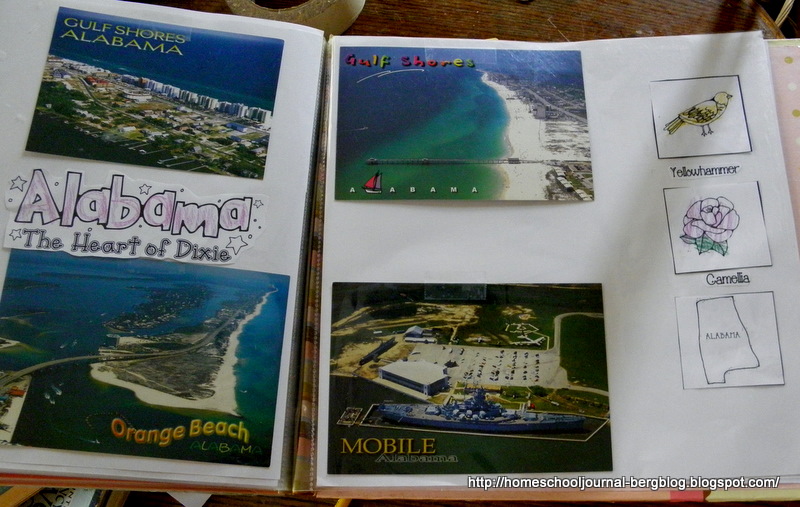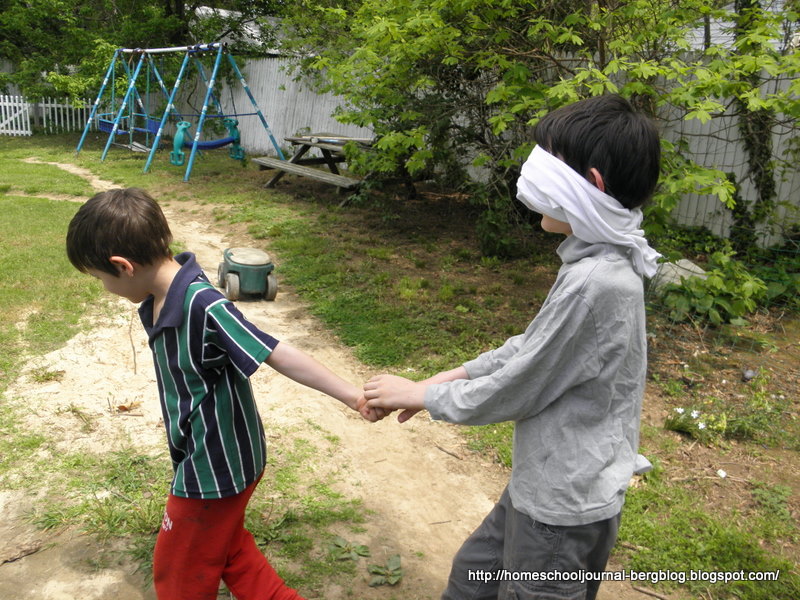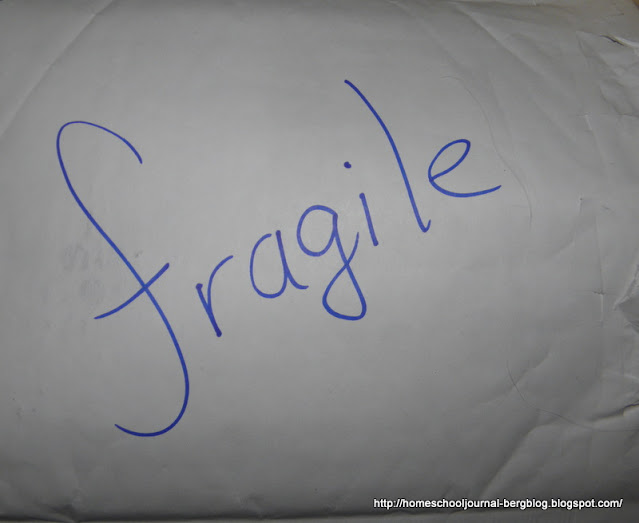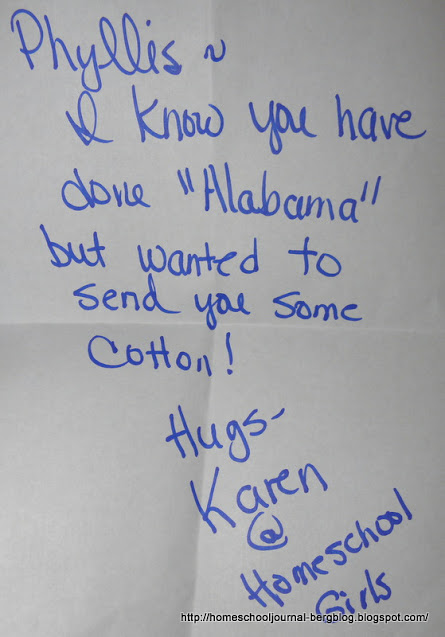Geography-Postcard Album: Alabama, The Heart of Dixie
This week's postcards came from our blog friends in Alabama, Traci and her family at Traci's Teaching Times. She sent us not only four postcards, but also a packet full of goodies that turned into a whole unit of study for us!
We had already learned a lot about the differences in how fresh and salt water act when we studied ocean currents.
 |
(top) This is the main fishing pier at Gulf Shores State Park. The fishing pier overlooks the Gulf of Mexico which is salt water. On the opposite side is the Lagoon which is fresh water." (bottom) There is much to see at the Battleship Park. You can go inside the Battleship, Submarine, The hanger, which has many airplanes and I-Max. You can go on a nature walk or have a picnic." |
 |
| Student's map sketch |
 |
| from Y is for Yellowhammer |
Traci also sent us a nice long letter in which she says, "I am sure you all have heard of Ms Helen Keller. Well she is a part of our state's history. She is one of our family's heroes, probably due to the fact that I (Traci) am legally blind. I graduated from the Alabama Institute for the Deaf and Blind in 1991."
 |
| She also included two sheets of braille writing. We found that it is not easy to learn to read! |
"I thought you guys might enjoy having a hands on experience of one of the ways that Ms Keller communicated with others. I have sent you guys the basic alphabet to look at. You can read it with your eyes, my family does, or you can try reading it as Ms Keller did and the way I do, with our fingers. Here is how you would do that. Take your two pointer fingers and place them flat on the paper with braille on it. Gently bend all other fingers and slightly hold them up so they can just glide across the paper. Now run your pointer fingers across the braille. Don't press down on the braille. Lightly glide your fingers across letting the braille tickle your fingers. The braille should be gliding across your finger between the tip of your finger and the first joint. It should be gliding closer to the little line that is on your finger close to the joint, not out on the tip of your finger. Now that you know how to hold your fingers, have fun trying to read the braille.Braille is a language all to its self. There are only six dots that make up the entire alphabet and all the words used in other languages. Braille is a very unique language. A good way to show your children the braille cell is to use your six cup muffin pan. Turn it upside down. There you have the Braille cell."
 |
| I thought it might be good for them to see what it would be like to be blind. I blindfolded them, one at a time |
and had them lead each other around.
 |
| pictures from Musings of Me |
We learned that Alabama's state bird is the Yellowhammer and the state flower is the Camellia and Alex added these to our scrapbook page. Alex also colored in the fifteenth state we have studied on our US map.
 |
| We read Y is for Yellowhammer. |
| We played a game from Musings of Me, counting the ants the Yellowhammer eats. We are still practicing those teens and we also played addition and subtraction games with it. |
 |
| photo and recipe from An Oregon Cottage We decided not to make an Alabama dinner this time, but instead we made some peanut butter bars since we learned that more than 200,000 acres of Alabama land produce around 600 million pounds of peanuts a year. Thank you, Traci, for a lovely state study. You should take a trip over to her blog and see the lovely things she does with her daughter and son. She is also looking for other to exchange postcards with so that they can start their own postcard-geography album. If you are interested in exchanging postcards with her, pop on over to her blog and leave her a note. If you would like to do an Alabama dinner, Karen from Homeschool Girls suggests Tomato Pie, Fried Green Tomatoes, cornbread or biscuits, pinto beans or black eyed peas and, of course, Southern Sweet Tea. UPDATE (11/1/11) We received a mysterious white envelope in the mail marked... |
We opened it to find...
a cotton plant with raw cotton! It also came with this note...
So much learning centered around this gift of a plant. We talked about the cotton crops before the Civil War, the Cotton Gin...
and a nature study on it since the plant is still attached.
There are so many possibilities.
Thank you, my friends, Karen and Kei at Homeschool Girls.
 |
| Alabama Cotton Girls |
"On the way home we passed so many cotton fields. We decided to stop and take pictures because, while cotton fields are very common to us, we thought some people may not have seen one before." -Homeschool Girls
UPDATE
I put the cotton in this lovely hooks for my mantillas.
Lastly, like the whole nation, we recently turned our attention to the Alabama area for other reasons and I was worried how Traci and her family was, but she sent me a message that they are fine. Not everyone is this area is however, so I just wanted to add a note to pray for those families and their neighbors in Alabama who have suffered due to the recent tornadoes.
visited 15 states (30%) and Washington DC in our postcard album











